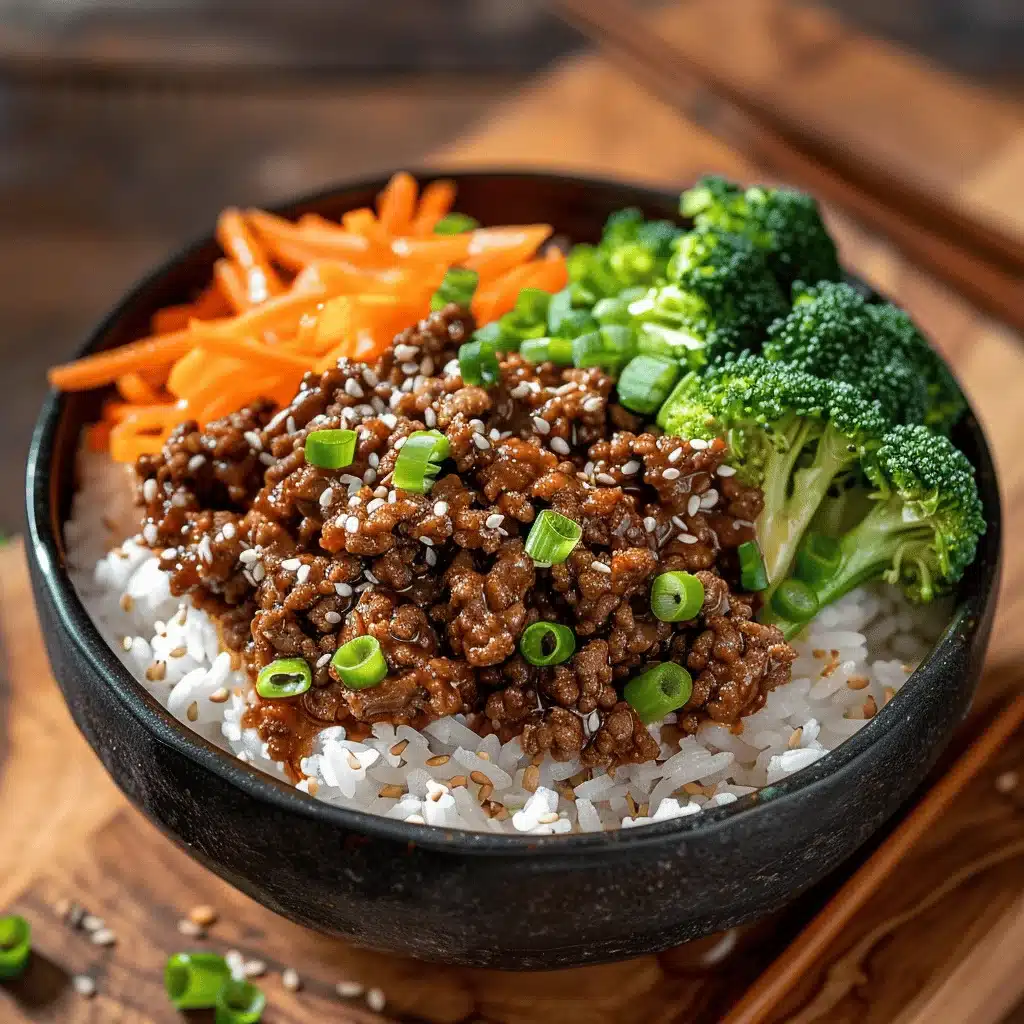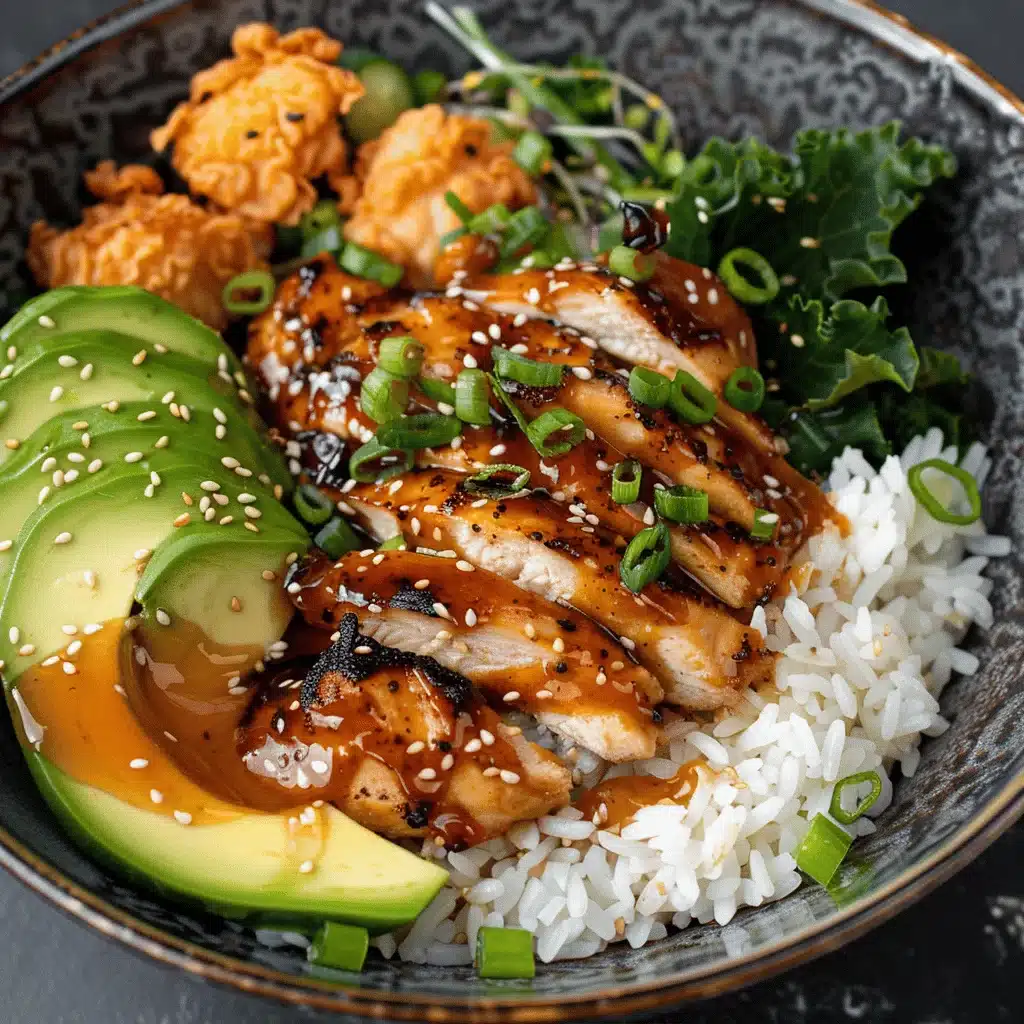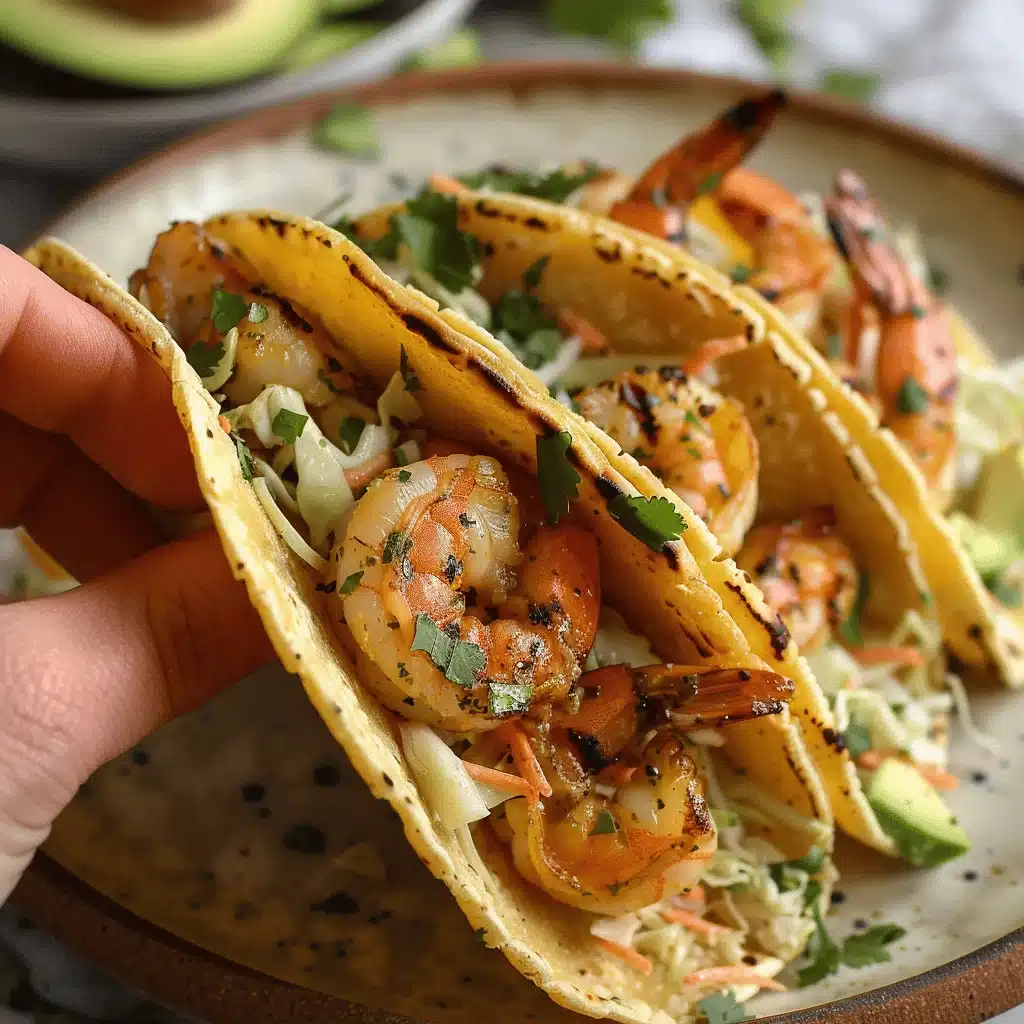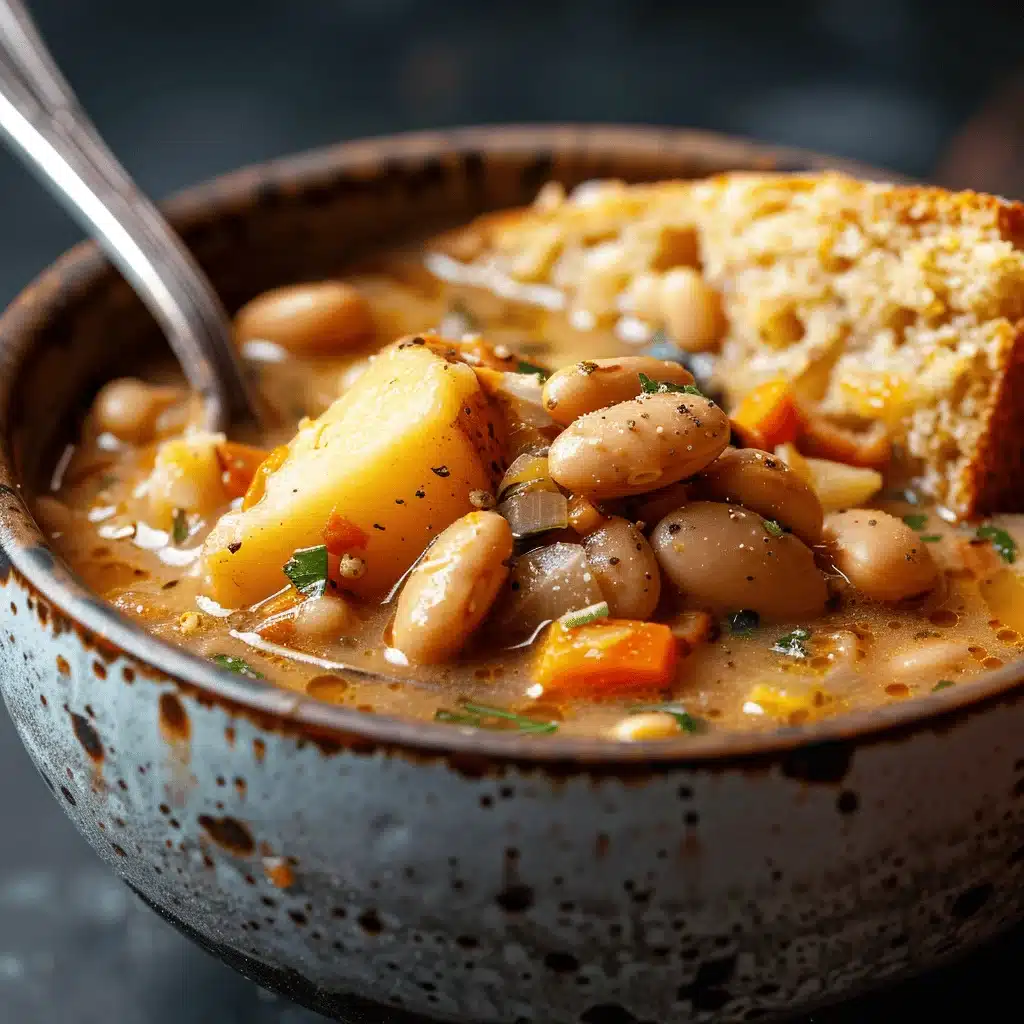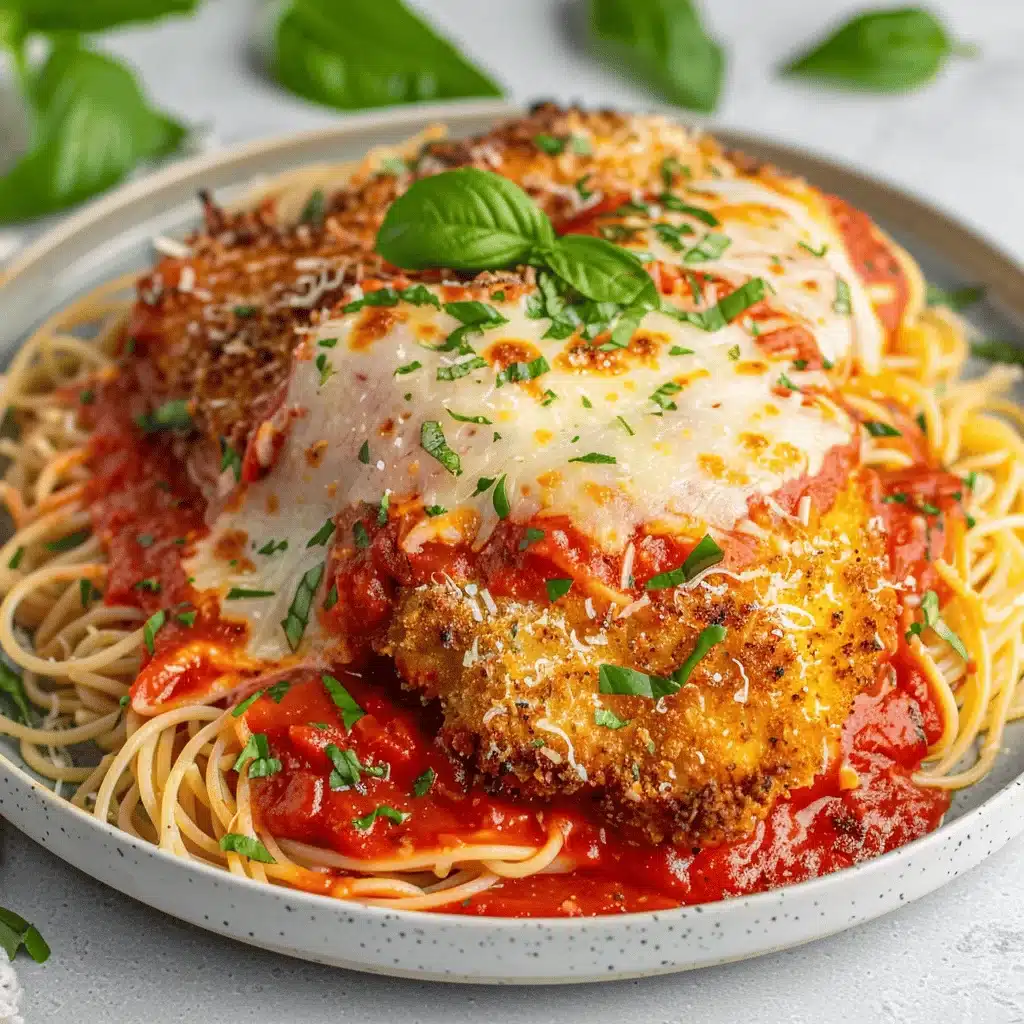The sizzle of beef in a hot skillet, tangy-sweet soy sauce in the air, and a rainbow of crisp veggies—honestly, this Korean ground beef bowl recipe is my answer to “What’s for lunch?” on any busy day. I remember the first time I whipped this up: it was a whirlwind work-from-home Wednesday, my fridge almost empty except for a pack of ground beef and a few stray veggies. Thirty minutes later, I had a steaming bowl packed with bold flavor, color, and just the right kick of heat. Since then, it’s become a staple at our kitchen table (and sometimes, on the couch in front of a favorite show—I won’t judge!).
This is the kind of Asian lunch you crave when you want something fast but don’t want to compromise on flavor. The beauty of this Korean ground beef bowl is how it hits all the high notes—savory, a hint of sweet, aromatic garlic and ginger, and a little crunch from fresh veggies. Plus, it’s quicker than takeout and way more satisfying. Over the years, I’ve played with the sauce, tried different veggie combos, even swapped the rice for cauliflower rice when I wanted to keep things lighter.
Whether you’re cooking for one, feeding a hungry family, or meal-prepping for the week, this recipe is a total winner. The ingredients are simple, the method is foolproof, and the results are always packed with flavor. If you’re new to Korean-inspired cooking, this is a fantastic place to start. It’s also great for high-protein diets or anyone wanting to sneak more veggies into their meals (my picky eater never complains about this one!). You’ll come back to this Korean ground beef bowl recipe again and again—trust me, I have.
Why You’ll Love This Recipe
- Quick & Easy: Honestly, it comes together in under 20 minutes—faster than waiting for delivery. Perfect for lunch breaks, after-school meals, or when you’re just plain hungry.
- Simple Ingredients: No need for a special trip to the Asian market. Most of these ingredients are already in your pantry or fridge.
- Perfect for Any Occasion: This Korean ground beef bowl makes a fabulous lunch, a speedy dinner, or a meal-prep hero for busy weeks. It’s equally at home on a weeknight or at a casual get-together.
- Crowd-Pleaser: Every time I make this, there are zero leftovers. Kids, teens, adults—everyone asks for seconds (or thirds, let’s be real).
- Unbelievably Delicious: The secret is in the sauce: a blend of soy, garlic, brown sugar, and a sprinkle of sesame. It’s got that irresistible umami and a balanced sweetness that makes each bite pop.
What sets my Korean ground beef bowl recipe apart? I always sauté the beef until it’s just crispy at the edges for extra texture, and I stir-fry the veggies right in the same pan so they soak up all that goodness. Plus, I like to sprinkle toasted sesame seeds and scallions on top for extra flavor and crunch—don’t skip this step! It’s a tiny detail, but it makes the bowl look and taste restaurant-worthy.
Let’s face it: we all want meals that are tasty, quick, and a little bit comforting. This recipe checks every box. It’s got that cozy, “home-cooked” feel but with a twist of bold, Asian flavors. I’ve tested it a dozen times (maybe more), and it never fails to impress—whether I’m cooking for myself or a table full of friends. This bowl isn’t just food; it’s a mood-lifter, a time-saver, and a weeknight hero—all in one.
Ingredients Needed
This Korean ground beef bowl uses pantry staples and a handful of fresh veggies to create a satisfying, crave-worthy meal. Here’s what you’ll need:
- For the Beef:
- 1 lb (450g) ground beef (I use 85% lean for a good flavor-fat balance, but you can go leaner if you like.)
- 3 cloves garlic, minced (fresh is best for that punchy aroma)
- 1 Tbsp (15g) fresh ginger, grated (or 1 tsp ground ginger if you’re in a pinch)
- For the Sauce:
- 1/4 cup (60ml) low-sodium soy sauce (I usually grab Kikkoman or Tamari for gluten-free)
- 2 Tbsp (30g) brown sugar (light or dark works—dark adds a deeper caramel note)
- 1 Tbsp (15ml) sesame oil (toasted for that nutty richness)
- 1-2 tsp (5-10ml) Sriracha or Gochujang (optional, for heat—adjust to your spice level)
- 1/4 tsp black pepper
- Veggies:
- 1 cup (130g) carrots, julienned or shredded (I grab pre-shredded for speed)
- 1 cup (100g) bell pepper, thinly sliced (any color works)
- 1 cup (100g) snap peas or snow peas, sliced (adds crunch and sweetness)
- 1/2 cup (50g) scallions, sliced (divided—some for cooking, some for garnish)
- For Serving:
- 2 cups (350g) cooked white or brown rice (or swap with cauliflower rice for a low-carb bowl)
- 1 Tbsp (10g) toasted sesame seeds (for garnish—adds a nutty crunch)
- Extra Sriracha or Gochujang (totally optional, for drizzling on top)
Ingredient tips: For the best texture, I recommend using small, uniform cuts for the veggies so everything cooks evenly. I’ve used both pre-minced garlic and tube ginger in a pinch, but fresh really does make a difference here. For the sauce, Tamari is a great swap if you’re gluten-free. If you want to go even healthier, swap the brown sugar for coconut sugar or a little honey. And don’t stress if you’re missing one veggie—just double up on another or use what’s in the fridge. This recipe is super forgiving!
Equipment Needed
- Large Nonstick Skillet or Wok: You need a good-sized pan for browning the beef and stir-frying the veggies. I’ve used both a classic wok and a big nonstick skillet—both work great.
- Wooden Spoon or Spatula: Essential for breaking up the beef and keeping things moving in the pan (especially if you’re a little overzealous with the stir-fry—guilty!).
- Chef’s Knife and Cutting Board: For slicing all those colorful veggies.
- Measuring Cups and Spoons: To get the sauce just right. I eyeball sometimes, but for best results, measure at least the first time.
- Rice Cooker or Saucepan: For preparing the rice. If you’re in a hurry, leftover rice works like a charm.
If you don’t have a wok, no worries—a big frying pan does the trick. I’ve even made this in a cast iron skillet for extra beefy flavor (just clean it well after for longevity!). For rice, a small saucepan is fine, but a rice cooker is a game-changer if you make rice often. And honestly, don’t splurge on fancy gear—this recipe is all about making do with what you have.
Preparation Method
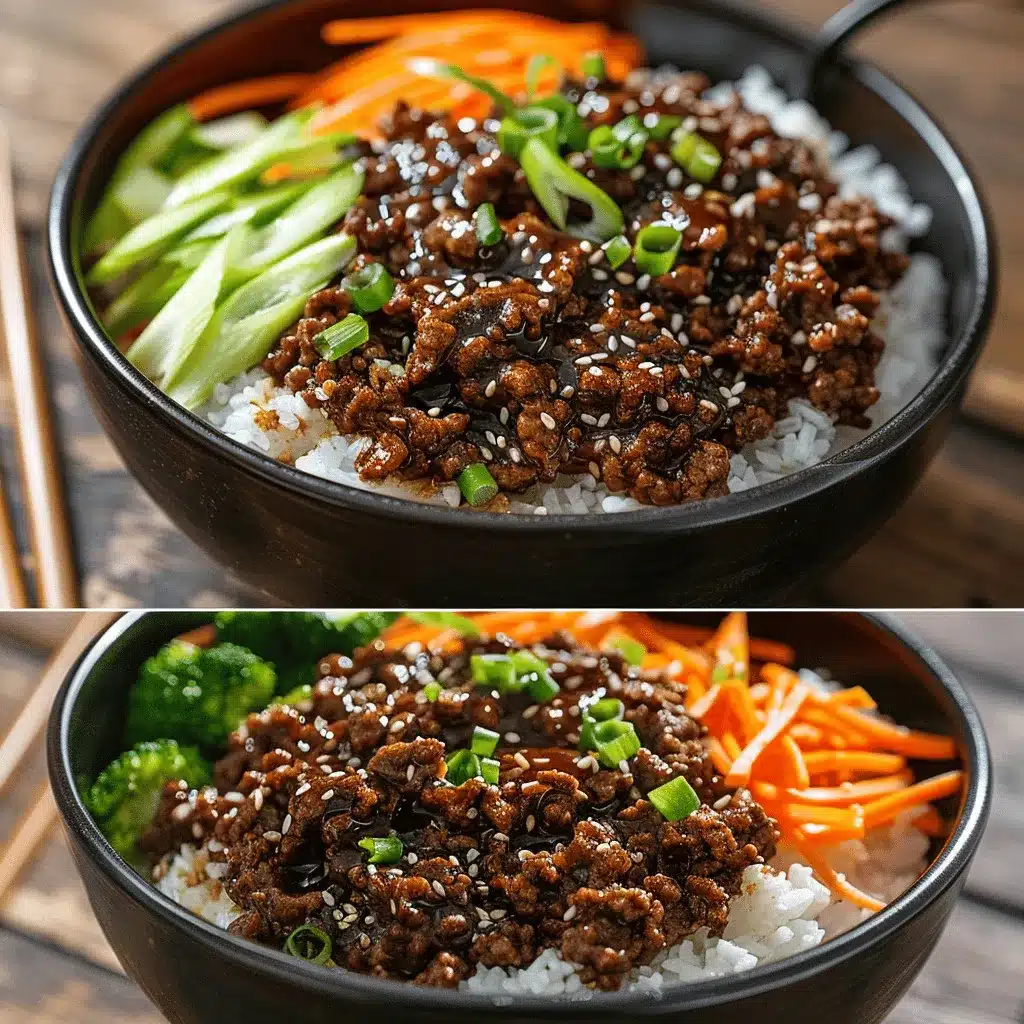
- Cook the Rice (if needed):
Time: 15 minutes
Prepare 2 cups (350g) of white or brown rice according to package instructions. I like using a rice cooker for perfect, fluffy grains, but stovetop works too. If using leftover rice, just reheat gently in the microwave or steam for a minute.
Tip: Start the rice first—it’ll be ready by the time your beef and veggies are done. - Prep the Veggies:
Time: 5 minutes
Slice or shred your carrots, bell pepper, and snap peas. Chop the scallions, keeping the white and green parts separate for layering flavors and garnish.
Preparation Note: Uniform cuts help the veggies cook quickly and evenly. If you’re in a rush, pre-cut veggies are totally fine! - Mix the Sauce:
Time: 2 minutes
In a small bowl, whisk together 1/4 cup (60ml) soy sauce, 2 Tbsp (30g) brown sugar, 1 Tbsp (15ml) sesame oil, 1-2 tsp (5-10ml) Sriracha or Gochujang (if using), and 1/4 tsp black pepper. Set aside.
Warning: Don’t skip the sugar—it’s what gives the sauce that classic Korean flavor! - Brown the Beef:
Time: 5-6 minutes
Heat your large skillet or wok over medium-high heat. Add the ground beef and cook, breaking it up with a wooden spoon, until browned and just a bit crispy at the edges. Drain off excess fat if there’s a lot.
Sensory Cue: You’ll know it’s ready when it smells savory and you see caramelized bits.
Tip: Don’t stir constantly—let the beef sit for a minute or two to get crispy! - Add Aromatics:
Time: 1 minute
Toss in the minced garlic and grated ginger. Stir for about 30 seconds until fragrant—don’t let them brown or burn.
Preparation Note: Garlic and ginger can go from fragrant to bitter quickly, so keep an eye on the heat. - Add Sauce & Simmer:
Time: 2 minutes
Pour the prepared sauce over the beef. Stir well to coat. Simmer for 1-2 minutes until the sauce thickens slightly and coats the beef.
Sensory Cue: The kitchen will smell amazing—savory, sweet, and a little spicy. - Stir-Fry Veggies:
Time: 2-3 minutes
Add carrots, bell pepper, snap peas, and half the scallions (the white parts) to the skillet. Stir-fry just until veggies are tender-crisp and vibrant in color.
Tip: Don’t overcook—the veggies should still have some crunch for texture. - Assemble Bowls:
Time: 1 minute
Spoon a generous portion of rice into each bowl. Top with the beef and veggie mixture. Sprinkle with the remaining scallions (green parts) and toasted sesame seeds. Drizzle extra Sriracha or Gochujang for more heat if you like.
Sensory Cue: The finished bowl should look colorful, glossy, and inviting!
Troubleshooting: If your sauce is too thin, simmer for another minute. If it’s too salty, add a splash of water or a sprinkle of brown sugar. And if the beef seems dry, a drizzle of extra sesame oil works magic!
Cooking Tips & Techniques
- Get the Pan Hot: A properly heated skillet or wok helps the beef brown instead of steam. Patience pays off for that crispy edge!
- Don’t Crowd the Veggies: If your skillet is small, stir-fry veggies in batches or they’ll steam and get soggy.
- Layer the Flavors: Add garlic and ginger after the beef browns, not before, to avoid burning and bitterness. I learned this the hard way—burnt garlic ruins everything.
- Sauce Consistency: The sauce should coat the beef without being soupy. If it’s too runny, simmer a bit longer. If it thickens too much, splash in a little water.
- Rice Timing: Start the rice first so it’s fluffy and ready when the beef is done. I’ve forgotten this once or twice and ended up scrambling…not fun!
- Garnish Generously: Don’t skimp on scallions and sesame seeds. They add flavor, texture, and that classic Korean bowl look.
One mistake I made in the beginning was rushing the beef—if you don’t let it brown, you miss out on flavor. Another is overcooking the veggies; you want them bright and a little crunchy, not limp. Multitasking is your friend here—chop veggies while the rice cooks, or whisk the sauce as the beef browns. If you’re meal-prepping, keep the rice and beef mixture separate until serving so things don’t get mushy.
And honestly, don’t be afraid to adjust the sauce to your taste. Sometimes I make it a little sweeter, sometimes extra spicy. Trust your tastebuds—they know best!
Variations & Adaptations
- Low-Carb or Keto: Swap the rice for cauliflower rice or shredded cabbage. I do this when I’m craving something lighter, and you still get all the flavor with fewer carbs.
- Vegetarian/Vegan: Use plant-based ground “beef” or firm, crumbled tofu instead of ground beef. Swap the fish sauce (if using) for soy sauce and skip the egg garnish.
- Spicy Korean Bowl: Add extra Gochujang or a teaspoon of chili flakes to the sauce for a bigger kick. My husband loves it this way—he says it tastes just like his favorite Korean BBQ bowl.
- Seasonal Veggies: In summer, toss in zucchini or fresh corn; in winter, try broccoli, mushrooms, or shredded cabbage. This bowl is a great fridge-clean-out meal!
- Allergen-Friendly: For gluten-free, use Tamari instead of regular soy sauce. For soy-free, try coconut aminos. For nut allergies, skip the sesame seeds.
One of my favorite personal twists is adding a soft-fried egg on top—when you break the yolk, it mingles with the sauce and rice for extra richness. If you’re feeling fancy, a handful of kimchi on the side adds a tangy crunch. Honestly, you can make this bowl your own in so many ways!
Serving & Storage Suggestions
Serving: This bowl is best served hot, straight from the skillet. I like to pile everything high in a wide bowl for that “build-your-own” vibe. For presentation, add extra scallions, sesame seeds, and a drizzle of chili sauce. It’s also fantastic with a side of quick cucumber pickles or a simple miso soup.
Storage: Let leftovers cool completely, then transfer to airtight containers. The beef and veggie mix keeps well in the fridge for up to 4 days. For longer storage, freeze in individual portions (without rice) for up to 3 months. Thaw in the fridge overnight and reheat in a skillet or microwave until hot.
Reheating Tips: Sprinkle a few drops of water over the rice before microwaving to keep it from drying out. If reheating on the stovetop, cover the pan and use low heat, stirring gently so the veggies don’t get mushy.
The flavors meld and deepen after a day—sometimes I think leftovers taste even better!
Nutritional Information & Benefits
A typical serving of this Korean ground beef bowl (with rice and veggies) provides about 450-500 calories, 25g protein, 15g fat, and 45g carbs. Using cauliflower rice drops the carbs and calories significantly. The dish is packed with protein from the beef and fiber from all those veggies, making it satisfying and nourishing.
Key ingredients like garlic and ginger offer immune-boosting and anti-inflammatory benefits. The use of low-sodium soy sauce keeps the sodium in check, especially if you’re watching your intake. It’s naturally dairy-free, and with a couple swaps (like Tamari and cauliflower rice), it’s easy to make gluten-free and low-carb. Just watch out for sesame allergies—skip the seeds if needed.
From a wellness perspective, I love that this bowl is balanced: protein, veggies, and a little whole grain or veggie “rice.” It’s comfort food that fuels you, not just fills you!
Conclusion
If you’re looking for a quick meal that doesn’t compromise on flavor or nutrition, this Korean ground beef bowl recipe is it. It’s one of those dishes you’ll find yourself making on repeat—easy, adaptable, and always delicious. Whether you’re cooking for yourself, family, or friends, it’s a guaranteed crowd-pleaser. I love how it brings big, bold Asian flavors to the table in just 20 minutes (and with minimal cleanup, too!).
Don’t be afraid to put your own spin on it—swap the veggies, adjust the heat, or add a fried egg on top. Cooking should be fun, not fussy! I hope this recipe brings a little extra joy to your lunchtime or dinner routine, just like it has for my family.
If you try this Korean ground beef bowl recipe, let me know in the comments! Share your twist or your favorite side dish pairing. Don’t forget to pin this post for later—your future hungry self will thank you. Happy cooking, and may your bowls always be full and flavorful!
FAQs
Can I use ground turkey or chicken instead of beef?
Absolutely! Ground turkey or chicken works great in this recipe. Just keep an eye on the cooking time—they tend to cook a bit faster than beef, and you might want to add a splash of oil for juiciness.
Is this Korean ground beef bowl recipe gluten-free?
It can be! Swap regular soy sauce for Tamari or coconut aminos, and make sure your Sriracha or Gochujang is gluten-free. Serve over rice or cauliflower rice as needed.
How spicy is this dish?
The base recipe has a mild kick, but you can control the heat by adjusting the amount of Sriracha or Gochujang. Add extra for spicier bowls, or leave it out for a kid-friendly version.
Can I meal-prep these bowls?
Yes, it’s perfect for meal prep! Store the beef and veggie mixture separately from the rice for best texture. Just reheat and assemble when ready to eat.
What veggies work best in this recipe?
Carrots, bell peppers, and snap peas are my go-tos, but you can use broccoli, mushrooms, zucchini, or even spinach. It’s a great way to use up whatever’s in your fridge.
Pin This Recipe!
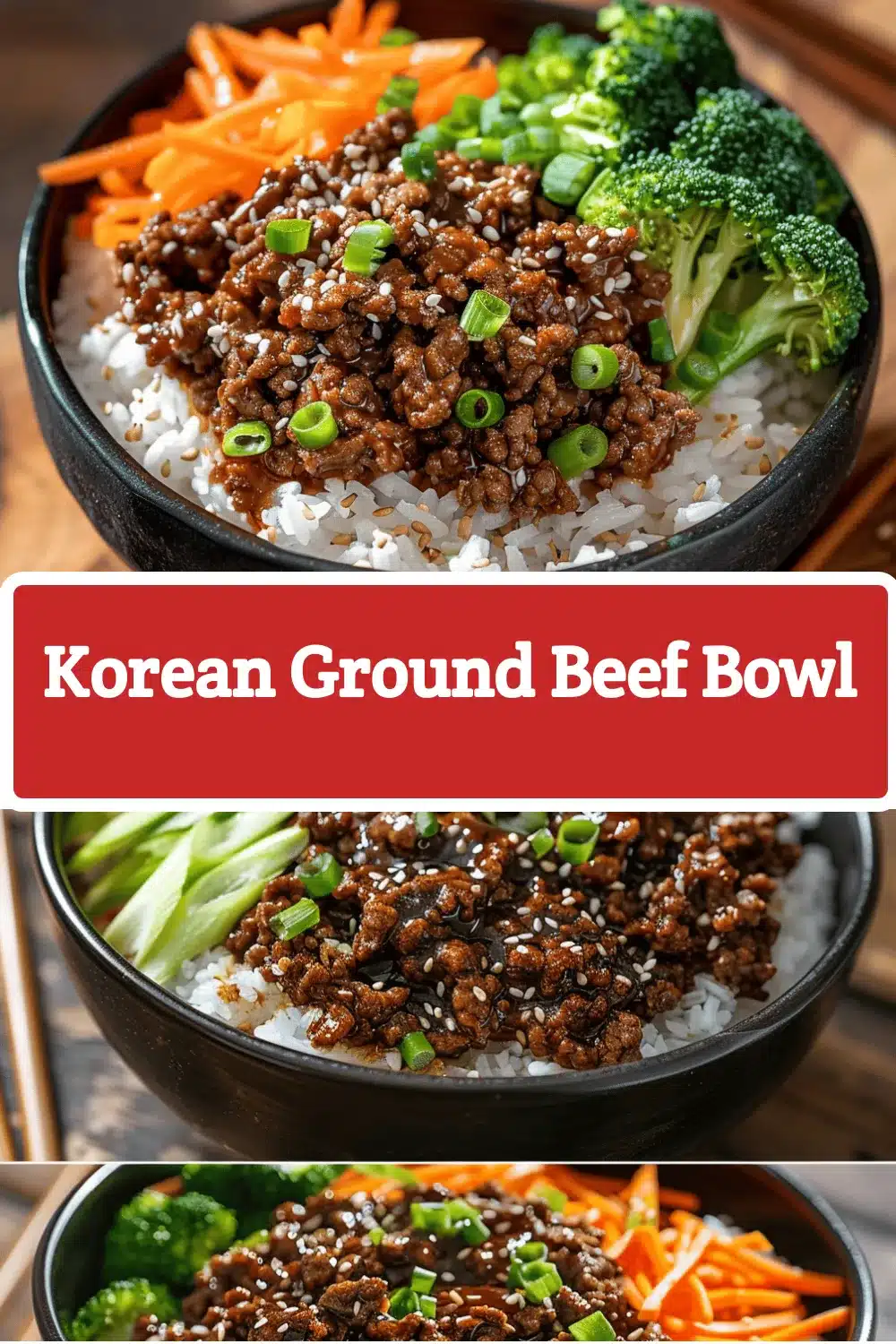
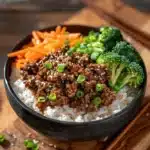
Korean Ground Beef Bowl Recipe
- Total Time: 20 minutes
- Yield: 4 servings 1x
Description
This quick and easy Korean ground beef bowl is packed with savory, sweet, and spicy flavors, crisp veggies, and a tangy-sweet soy sauce. Ready in just 20 minutes, it’s perfect for a satisfying Asian-inspired lunch or dinner any day of the week.
Ingredients
- 1 lb ground beef (85% lean recommended)
- 3 cloves garlic, minced
- 1 Tbsp fresh ginger, grated (or 1 tsp ground ginger)
- 1/4 cup low-sodium soy sauce (or Tamari for gluten-free)
- 2 Tbsp brown sugar (light or dark)
- 1 Tbsp toasted sesame oil
- 1–2 tsp Sriracha or Gochujang (optional, for heat)
- 1/4 tsp black pepper
- 1 cup carrots, julienned or shredded
- 1 cup bell pepper, thinly sliced
- 1 cup snap peas or snow peas, sliced
- 1/2 cup scallions, sliced (divided for cooking and garnish)
- 2 cups cooked white or brown rice (or cauliflower rice for low-carb)
- 1 Tbsp toasted sesame seeds (for garnish)
- Extra Sriracha or Gochujang (optional, for serving)
Instructions
- Cook the rice according to package instructions if not using leftovers. Start this first so it’s ready when the beef and veggies are done.
- Prep the veggies: slice or shred carrots, bell pepper, and snap peas. Chop scallions, keeping white and green parts separate.
- In a small bowl, whisk together soy sauce, brown sugar, sesame oil, Sriracha or Gochujang (if using), and black pepper. Set aside.
- Heat a large nonstick skillet or wok over medium-high heat. Add ground beef and cook, breaking it up, until browned and slightly crispy at the edges. Drain excess fat if needed.
- Add minced garlic and grated ginger to the beef. Stir for about 30 seconds until fragrant, being careful not to burn.
- Pour the prepared sauce over the beef. Stir well and simmer for 1-2 minutes until the sauce thickens and coats the beef.
- Add carrots, bell pepper, snap peas, and half the scallions (white parts) to the skillet. Stir-fry for 2-3 minutes until veggies are tender-crisp.
- To serve, spoon rice into bowls, top with beef and veggie mixture, and garnish with remaining scallions (green parts) and toasted sesame seeds. Drizzle with extra Sriracha or Gochujang if desired.
Notes
For a gluten-free version, use Tamari instead of soy sauce. Swap rice for cauliflower rice for a low-carb bowl. Adjust the amount of Sriracha or Gochujang to control the heat. Garnish generously with scallions and sesame seeds for extra flavor and crunch. Leftovers keep well for up to 4 days in the fridge or 3 months in the freezer (without rice).
- Prep Time: 10 minutes
- Cook Time: 10 minutes
- Category: Main Course
- Cuisine: Korean
Nutrition
- Serving Size: 1 bowl (about 1/4 of recipe, including rice and veggies)
- Calories: 475
- Sugar: 10
- Sodium: 800
- Fat: 15
- Saturated Fat: 5
- Carbohydrates: 45
- Fiber: 4
- Protein: 25
Keywords: Korean ground beef bowl, Asian lunch, quick dinner, easy Korean recipe, beef stir fry, meal prep, gluten-free option, low carb, high protein, family friendly

